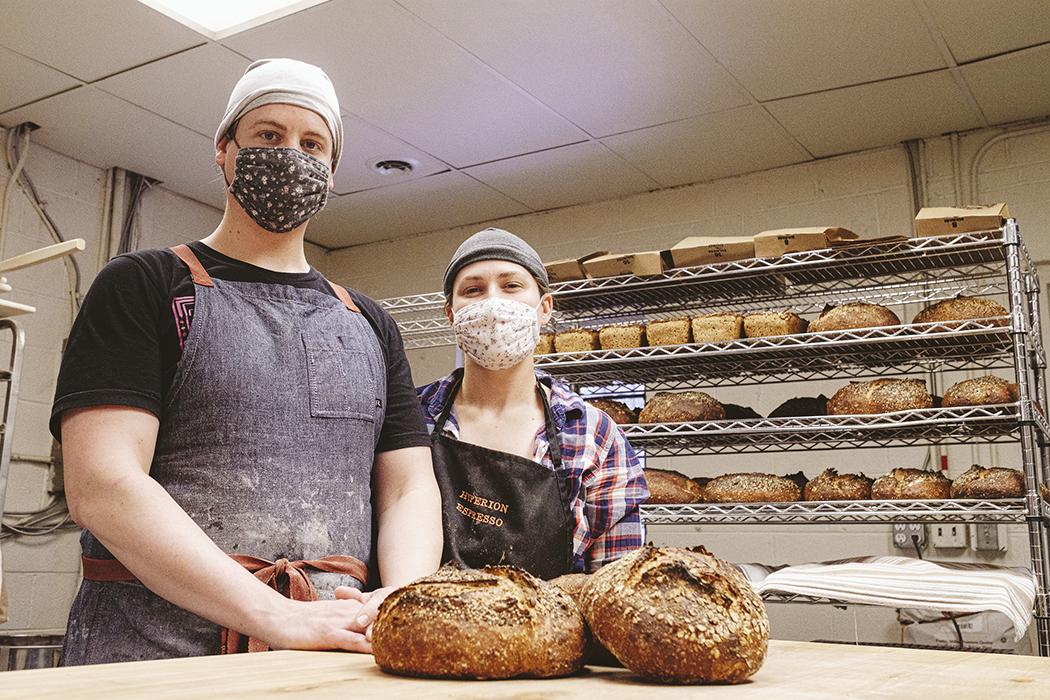When Marian Bayker got into breadmaking, she knew she’d be milling her own flour as part of the process. “It seemed like an obvious choice,” says the Althea Bread owner. “My mother had been doing it for years. She used to buy big five-gallon buckets of wheat and milled them on a little steel burr Nutrimill.”
Bayker wanted to create a product no one else had, so she started working with a local farmer growing grain to make beer. Many trials later, she realized that specific wheat wouldn’t produce the product she had in mind.
“As it turns out, the particular properties of a batch of wheat have an enormous effect on the resulting flour,” she says. “Even the same variety of wheat grown by the same farmer on two different fields can have different properties.” A good bread flour, Bayker says, needs strength (to hold up during a 24-hour fermentation cycle) and flexibility (to shape properly and expand in the oven during baking). When a loaf uses only flour, water, and salt—as Bayker’s country bread does—the flour is a crucial component.
Bayker gets bread wheat from a nearby farmer and uses two small stone mills and a sifter to make her flour. Sifted flours, or high-extraction flours, are similar to those produced by small community stone mills in Europe and America before the rise of modern industrial roller mills.
One of two local bakeries milling its own flour, Althea (and, thus, Bayker) strives to utilize everything available to make the best bread possible.
